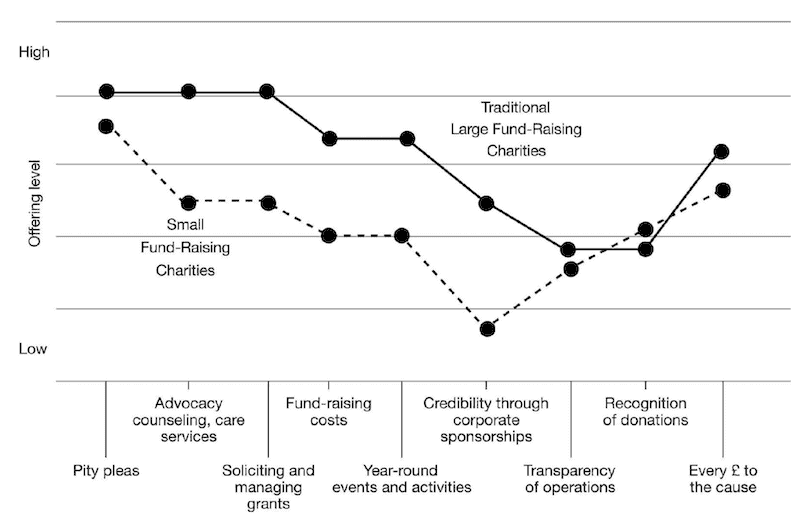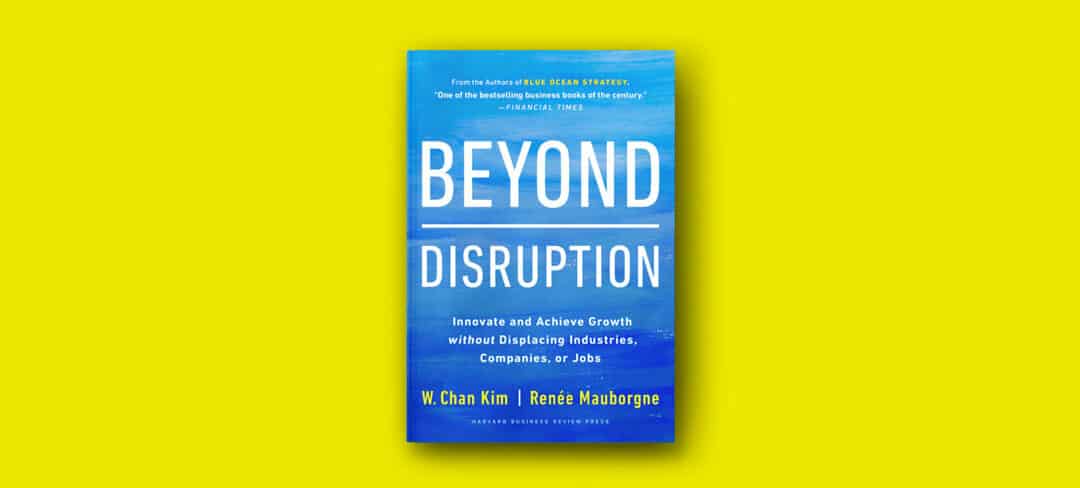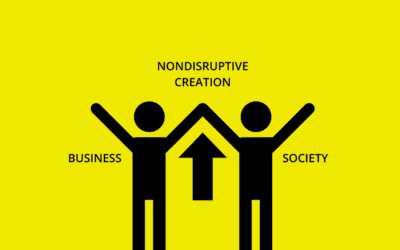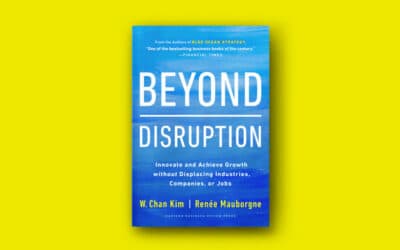The first thing you need to know as an entrepreneur or a small business owner is that to grow your business, you have to move away from competing. Don’t try to go up against big established players with huge financial and marketing resources. Instead, to grow your business you should focus on creating new markets.
Business Strategy For Small Business Owners
Plenty of successful small companies grow fast without going head to head with the competition at all. Why go against Goliath when you don’t have to? Instead, whether you’re a small company, a startup or a solopreneur, learn to shift from competing to creating, and grow your business by offering unprecedented value to your buyers.
How To Grow Your Business? See The Big Picture First
The first step should be to have a clear understanding of where you stand. To do this, you need to draw your as-is strategy canvas, a blue ocean analytic tool created by Chan Kim & Renée Mauborgne.
Your as-is strategy canvas will give you a big picture view of the current state of play in your industry or target industry. You will be able to clearly see the industry’s defining boundaries without getting lost in the small operational details.
By drawing the as-is strategy canvas, you will capture on a single page the current state of play, the assumptions the industry acts on, as well as the set of factors the existing players compete on. This will give you and your team a commonly agreed-upon baseline to assess new ideas against. Here is a step-by-step guide on how to draw your strategy canvas which comes with a downloadable strategy canvas template.
Below is an example of an as-is strategy canvas of the fund-raising charity industry. As you can see, the strategic profile of small fund-raising charities more or less mirrors that of traditional large fund-raising charities. These me-too charities all compete on the same set of factors, carrying out almost identical fundraising activities, ultimately leading to donor fatigue.
For more strategy canvas examples in various industries, read “5 Compelling Strategy Canvas Examples You Can Learn From.”
As-Is Strategy Canvas of the Charity Fund-raising Industry

© Chan Kim & Renée Mauborgne, Blue Ocean Shift.
Imagine Where You Could Be To Grow Your Business
The next step is to imagine where you could be. If you’re a small business owner or a start-up founder faced with intense competition, declining demand and increasing costs, do not take industry practices as a given.
Don’t let the structure of the industry shape your strategy because just as individual firms created existing industry conditions, individual firms can shape them too, small businesses included. Just look at the US life-coaching industry. It is a $2 billion industry that didn’t exist 25 years ago. Today it is the second-fastest-growing profession in America – a profession and industry created entirely by solopreneurs.
To identify your blue ocean opportunity and grow your business, you don’t need to be a creative genius, you just need the right tools.
Create and Capture New Demand
Focusing on existing customers will keep your business anchored in the red ocean of existing market space. In most industries, organizations converge around a common definition of who their customers are. This prevents companies from seeing the wider potential of new demand outside their industry that they could tap into. In many industries, existing customers are just a drop in the bucket compared with all the noncustomers who can be reached through market-creating strategies.
To capture these noncustomers, you need to identify the pain points that stop them from buying into your target industry. Pain points are aspects of a business, product, or service that buyers, knowingly or unknowingly, are forced to put up with or find so inconvenient that they turn to alternatives. Utility captures the satisfaction that buyers get out of a business, product or service. Blocks to utility have the opposite effect. These are the difficulties or pain points an industry imposes on buyers.
To Grow Your Business Turn Problems Into Opportunities
Most industries become blind to pain points, just as buyers often become numb to them, in the belief that they are simply the way things are. But as a small business owner, you can turn these pain points into an opportunity to capture new demand. Start by identifying the pain points blocking buyer utility in your industry with Chan Kim & Renée Mauborgne’s buyer utility map.
As a small business owner, you can turn these pain points into an opportunity to capture new demand.
A buyer’s experience can be broken down into six distinct stages from purchase to disposal – what we call the ‘buyer experience cycle’. Running down the vertical axis of the buyer utility map are the six utility levers, some of which you might pull to offer buyers greater utility. Combined with the six stages of the buyer cycle, the map produces 36 potential utility spaces. Where does your industry or target industry concentrate its efforts among these 36 possible spaces?
Few industries or organizations realize how many utility spaces they could explore or, on the flip side, the narrowness of their current focus. Start filling in your buyer utility map to widen your focus and discover blue ocean opportunities.
Create value and lower costs
If you’re a small business owner with limited resources, do you act on the assumption that, to achieve differentiation, you need to spend more? Do you assume that lowering costs means compromising on the distinctive value you can offer?
To truly stand apart and offer buyers unprecedented value, you need to break the value-cost trade-off. This means focusing on both (1) the factors of competition that you can raise and create to increase value for buyers and (2) the factors you can eliminate and reduce to decrease costs. Chan Kim & Renée Mauborgne’s Eliminate-Reduce-Raise-Create (ERRC) Grid, a blue ocean analytic tool, will help you achieve this.
Chart your company’s future
Once you’ve filled in your ERRC grid, use it to start drawing your ‘to-be’ strategy canvas.
Your to-be strategy canvas, in one single visual, will show how your strategic profile, or future blue ocean strategic move, stands apart from your competition. It can be a great visual to present to potential investors and funders.
With these tools in hand, chart your company’s future and shift from competing to creating. Let blue ocean shift process help you grow your business.


















